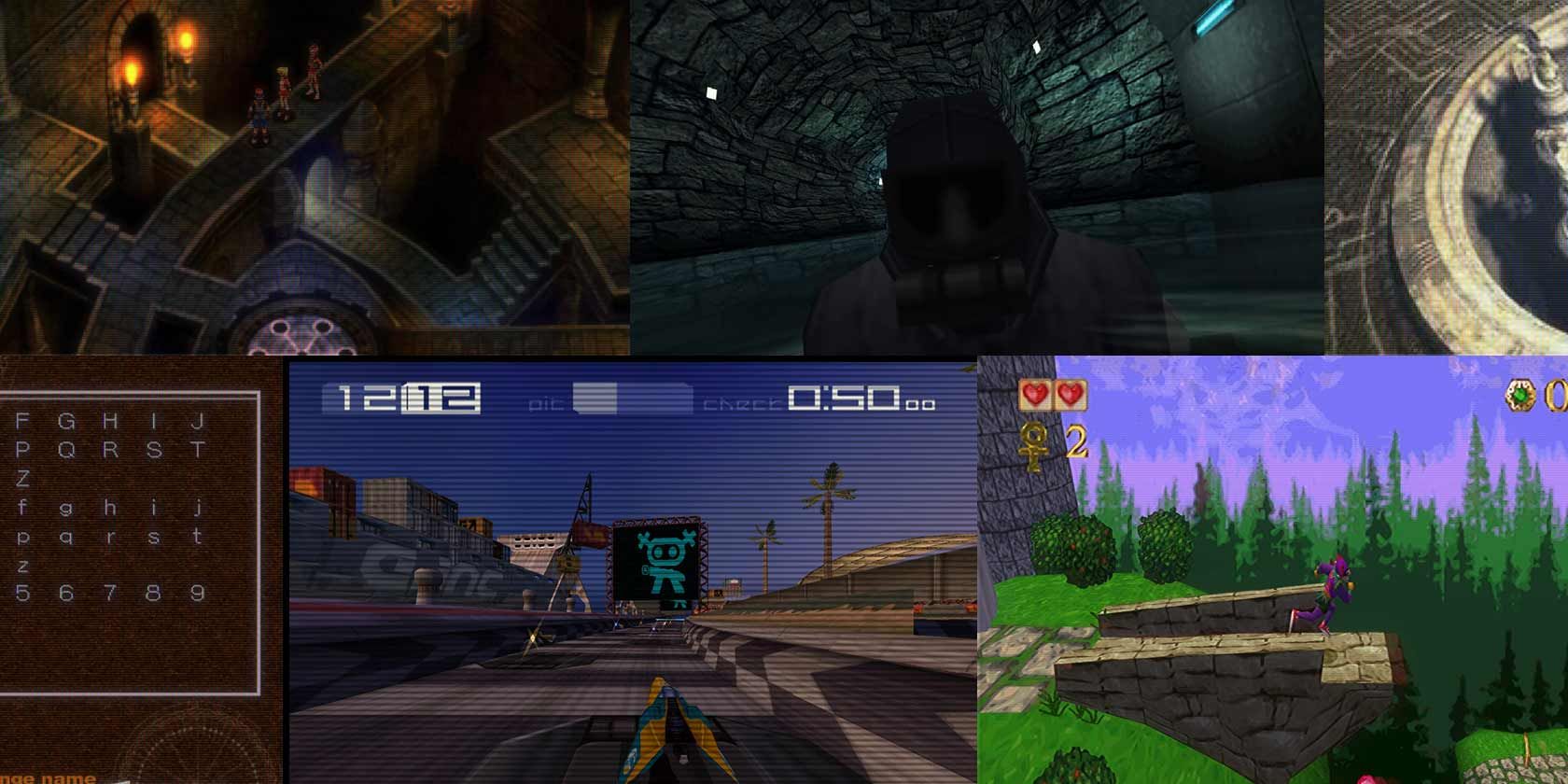Ronald.phillips
Shared posts
Bruenor41 posted a comment on ticket #559
Dozens of Exploited Vulnerabilities Missing From CISA ‘Must Patch’ List
An analysis found that over 40 exploited vulnerabilities, mostly leveraged by botnets, are missing from CISA’s ‘must patch’ catalog.
The post Dozens of Exploited Vulnerabilities Missing From CISA ‘Must Patch’ List appeared first on SecurityWeek.
Hackers Exploiting Remote Desktop Software Flaws to Deploy PlugX Malware
This Bathroom Staple Will Keep Your Trash Cans From Smelling Awful

From the garage to the kitchen to your kids’ bedrooms, smelly trash cans abound in your home. But you might already have the perfect solution—in your bathroom. While there’s no substitute for thoroughly cleaning out garbage cans or diaper pails regularly, you can—and should—still stay on the smell offensive: with some…
Six months later, there are a lot of theories about who blew up the Nord Stream pipeline, but much like the pipeline itself, they're all full of holes [Followup]
Prepare to see a lot more of Epic Online Services, with Epic's new self-publishing
Get Call of the Sea for Free
Star Trek: Picard Showrunner On How The Borg Are Always There, Even When They're Not [Exclusive]
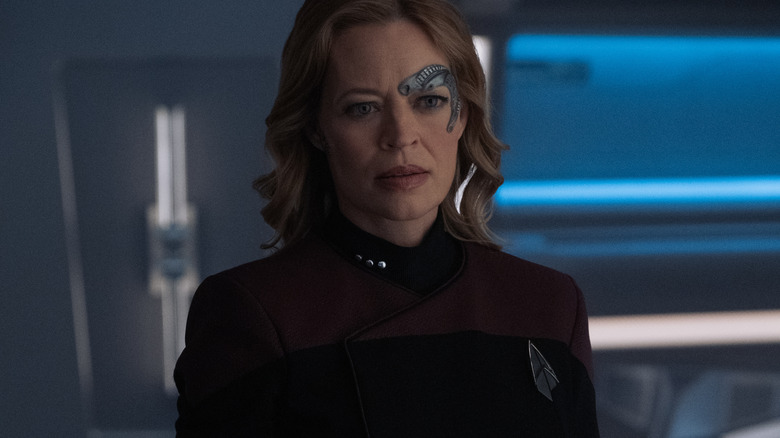
The Borg, a malevolent species of cyborgs from the deepest reaches of space, first appeared on "Star Trek: The Next Generation" during its second season in an episode called "Q Who" (May 8, 1989). In that episode, the USS Enterprise was thrown across the galaxy by the godlike alien Q (John de Lancie) to face a threat that Q knew it couldn't handle. The Borg -- sharing a single, machine consciousness -- had no voice, no ability to reason, and no motivation. They simply aimed to carve up the Enterprise and incorporate its crew and technology into its own collective. Diplomacy was not an option, weapons didn't help, and no amount of cleverness helped. The Borg would absorb them. Only Q could help them.
The Borg were such a fascinating species that "Star Trek" brought them back time and time again, even to the point of exhaustion. They were the central antagonists of the third and sixth season finales of "Next Gen." They were featured in a movie. Starting in its fourth season, one of the main characters on "Star Trek: Voyager" was a Borg, and the Borg would factor heavily into that show besides. After a while, the Borg were no longer a threat, but a constant droning presence in "Star Trek," always humming right in the background.
/Film's own Vanessa Armstrong recently spoke with Terry Matalas, the showrunner for "the third season of "Star Trek: Picard," and asked if the Borg would come into play in the new show as well. That is, apart from the fact that former Borg Seven of Nine (Jeri Ryan) was still a regular on the series, and that Picard (Patrick Stewart) was once assimilated.
What Are The Borg, Really?
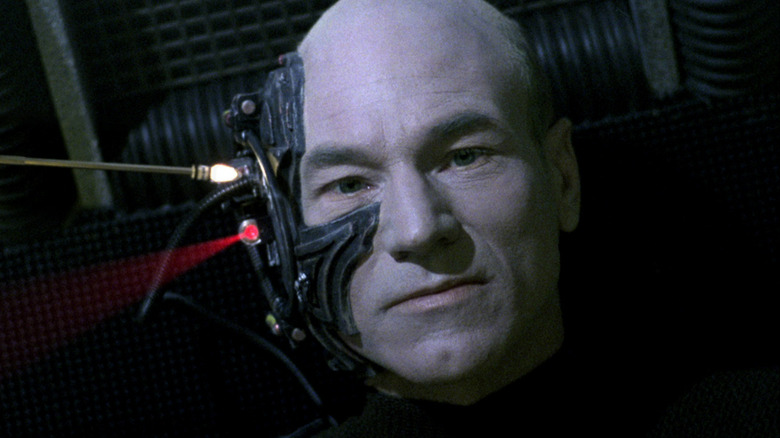
Matalas was, of course, coy about the potential inclusion of the Borg on "Picard" -- he didn't want to give anything away, one way or the other. But he did wisely point out that the Borg have become a symbol in "Star Trek." After Jonathan Frakes' 1996 feature film "Star Trek: First Contact," it was revealed that Capt. Picard was deeply wounded by his experience of being assimilated and had come to resent the constant, unstoppable power the Borg possessed. In that film, Picard was deeply out of character, transforming himself into a tank-top-wearing, revenge-obsessed fighter, happy to kill any Borg that stood in his path. "I will make them pay for what they've done," he yells, a very un-Picard sentiment.
After that film, and deep into "Voyager," more and more characters were introduced that were rescued and rehabilitated from the Borg's assimilation process. Each one of them was traumatized by the experience and had to claw their original identities back from the machinations of insidious cyborg implants throughout their brains and bodies. The Borg came to represent an ever-present traumatic force in "Star Trek," often being the experience that marked certain characters forever. Matalas sees that symbolism, and notes that it does play into "Picard," saying:
"I think it's all about trauma. I think there's certainly, those things are part of 'Star Trek' DNA, specifically in this timeline. I think you're also looking at a post-Dominion War era, and so that stuff feeds in. Those major events should continue to be part of the conversation. We still talk about 9/11 on a daily basis and play a part. So it feels like it would be part of that conversation."
Trek And Trauma
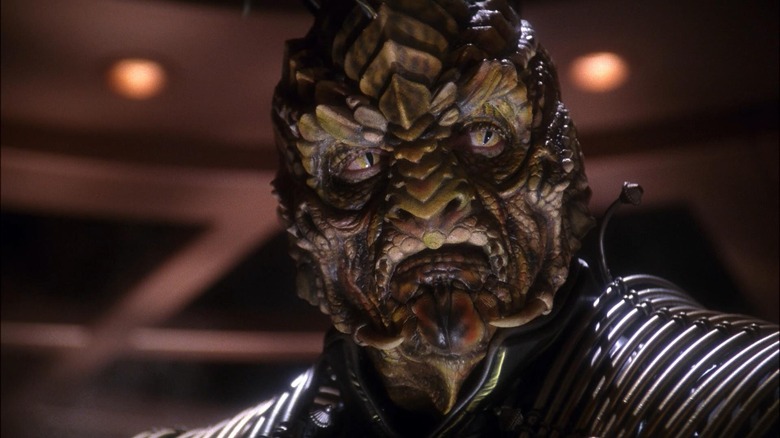
Of course, the Borg weren't always about trauma. That was something the other franchise shows eventually adopted over time. It's notable that Matalas should mention 9/11, as that event altered a lot of popular entertainment, quite immediately. On a surface level, action pictures that featured the wholesale destruction of cities and buildings were, for some time, considered in poor taste. Remember in 1996, when Roland Emmerich could explode the White House as a thrilling, climactic moment in "Independence Day"? After 9/11, the United States began a cultural epoch that involved alternating states of mourning and wartime revenge. Suddenly the diplomacy and pacifism of Gene Roddenberry's 1960s utopian sci-fi series seemed naïve and out of place.
"Star Trek" attempted to reconcile the nation's post-9/11 ethos by incorporating a very 9/11-style story into "Star Trek: Enterprise," the series that was airing at the time. A mysterious species called the Xindi, unknown to Earth, appeared out of nowhere and destroyed the entire state of Florida. The entire season was devoted to tracking them down and enacting revenge. The show became more intense and unified but wasn't very "Trek"-like. It's certainly also notable that J.J. Abrams' 2009 "Star Trek" feature film, and its sequels, were about violence, revenge, and action. This was what "Star Trek" had to become after 9/11.
In 2023, we're essentially looking at the next generation of trauma. Grudges still exist regarding the Borg, and healing still needs to take place, even if the Borg aren't physically present to fulfill their usual plot functions or do their symbolic due diligence.
Borg or not, there will always be something hovering over the shoulder of "Star Trek." One might hope, though, that the world is ready for utopia again.
Read this next: Every Star Trek Movie Ranked Worst To Best
The post Star Trek: Picard Showrunner On How The Borg Are Always There, Even When They're Not [Exclusive] appeared first on /Film.
Star Trek: Picard's Todd Stashwick Yelled At Patrick Stewart And Lived To Tell The Tale [Exclusive]
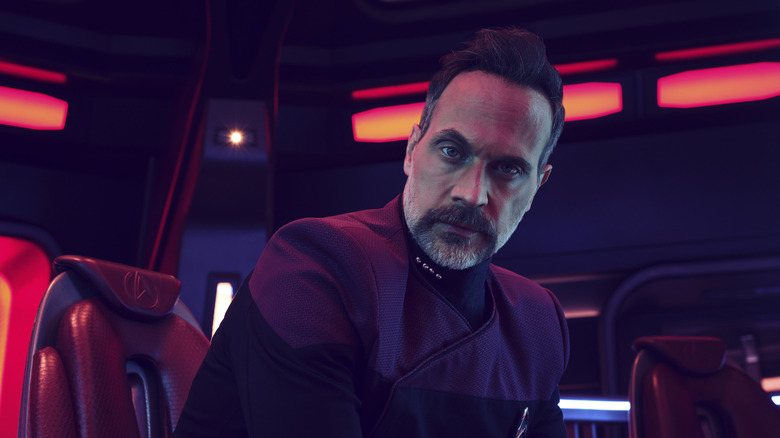
The following article contains spoilers for the latest episode of "Star Trek: Picard."
Everyone loves a good villain, and "Star Trek" villains can be especially fun to hate. From John de Lancie's Q to Louise Fletcher's Kai Winn, the franchise has had some seriously fun baddies, but they're rarely part of Starfleet. Sure, you get your occasional rogue admiral who engages in some evil plan, but you don't often get real nastiness or arguing between Starfleet officers, especially not with Jean-Luc Picard (Patrick Stewart) around. He's not the kind of Starfleet icon who solves his problems with yelling, but in the latest episode of "Star Trek: Picard," he bears the brunt of one seriously angry tirade courtesy of the Captain of the U.S.S. Titan, Captain Shaw. Shaw, played by Todd Stashwick, is a gruff and grumpy captain who wants nothing to do with the ridiculous adventures of Picard or the Titan's previous captain, William T. Riker (Jonathan Frakes). When he took command of the Titan, he deleted all of Riker's jazz music, voicing serious disdain for the free-wheeling musical style. But in the most recent "Picard," he did something even more unthinkable: he straight-up yelled at Picard.
/Film's Vanessa Armstrong interviewed Stashwick and asked him about that tense moment and if it's terrifying yelling at a living legend. The tongue-lashing that Shaw gives Picard is brutal, and even though everyone involved is a professional, it has to be weird yelling at Patrick Stewart. Stashwick totally nails the scene and chews poor Picard a new one, and he shared what it was like filming that shocking scene.
One Person's Hero Is Another's Greatest Villain
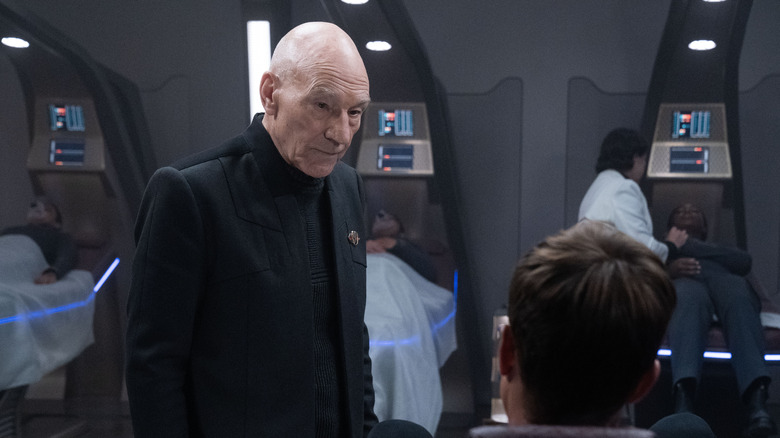
Captain Shaw clearly isn't a huge fan of Picard, and he makes that evident the moment the senior officer steps onboard the Titan. He treats Picard, Riker, and Seven of Nine (Jeri Ryan) with absolute disdain, commenting on Riker's "loosey-goosey" life choice and referring to Seven as an "ex-Borg." He clearly detests the Borg and makes a few small references to this fact, but it's nothing compared to how he lets loose on Picard, whom he first encountered when the admiral was assimilated and acting as Locutus of Borg. Things aren't exactly going well on the Titan, as they're trapped in a no-win, Kobayashi-Maru-style situation where they're facing down almost certain death, and Picard and his estranged son Jack Crusher (Ed Speelers) take to the holodeck to try and make up for lost time.
While reminiscing about another no-win situation with Jack's namesake many years before, Shaw enters the holodeck and shares a memory of his own. The first time he met Picard, it was when the captain was a part of the Borg collective. Shaw's ship was about to be destroyed during the infamous battle of Wolf-359. 50 of them made it to the lifepod deck, but there were only 10 seats. Somehow, Shaw was picked to survive, and it's clear he never forgave Picard. He tells Jack Crusher:
"11,000 dead. Do you know where your old man was on that day? He was on that Borg cube, setting the world on fire! Forget about all that weird s*** about the Stargazer, the real Borg are still out there, and they have a name for you: Locutus of Borg. The only Borg so deadly they gave him a goddamn name."
It's enough to make Picard get up and leave, ending his attempt at mending things with Jack. Ouch.
'That Was A Scene Where They Allow This Character To Peel Back A Curtain And Reveal His Pain In A Big Way'
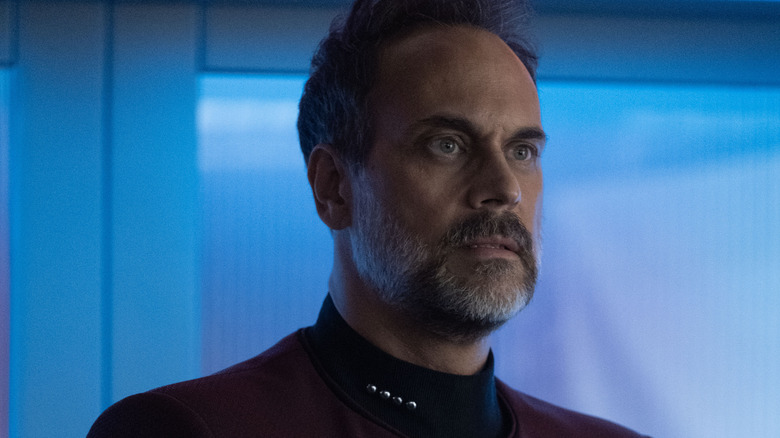
Shaw even knows he went too far, commenting that at some point he replaced charm with "being an a**hole," but thankfully the experience filming the scene was less painful for Stashwick:
"Those kinds of scenes and that kind of writing is a rare thing. We often, especially in television, it's just 'got to keep moving.' But because it's a 10 episode show, we get to let moments breathe. And that was a scene where they allow this character to peel back a curtain and reveal his pain in a big way. So it was humbling and an honor to get a scene like that in this franchise."
Jonathan Frakes directed the episode and Shaw said he was given plenty of room to play with the performance, trying different variations from beginning to end to see what worked best. Even though Stewart and Speelers didn't have any dialogue during his big moment, they still gave him plenty to work with and react to. And it wasn't too tough to yell at Stewart, either, because he's a "silly heart off-screen." Stewart even gave him a nice gesture of reassurance afterward that he crushed the scene, and everyone is still friendly even if their characters aren't. It will be interesting to see how the dynamic between Shaw and Picard changes in the coming weeks, as new episodes of "Star Trek: Picard" stream Thursdays on Paramount+.
Read this next: The Strongest Star Trek Villains Ranked
The post Star Trek: Picard's Todd Stashwick Yelled at Patrick Stewart and Lived to Tell the Tale [Exclusive] appeared first on /Film.
Sequels That Ignored The Previous Movie's Ending
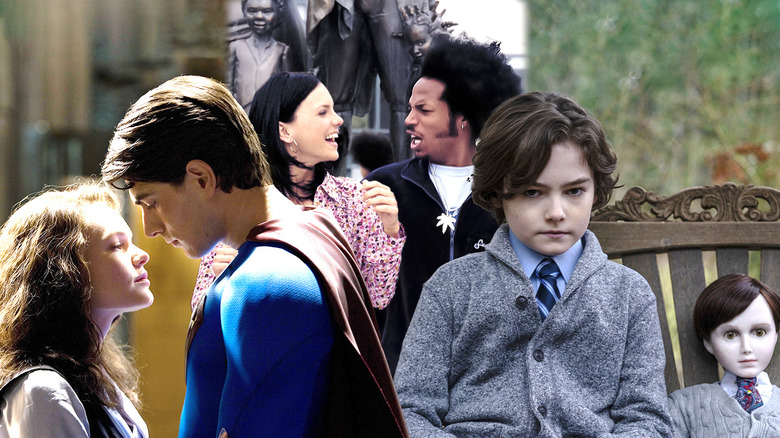
Though moviegoers and filmmakers alike may sometimes think of Hollywood as a purveyor of art and entertainment, the industry is, above all, a business. This means that the bottom line is of the utmost importance to studio executives, which, unfortunately, sometimes leads to decisions that don't produce a favorable outcome for viewers. Case in point: movie sequels. When a film is a hit, producers start itching to replicate its success, and sequels are seen as the best way to do that. However, not all follow-ups are made equal, and things sometimes get left behind in the rush to generate another box office smash.
Strict continuity isn't necessarily the most vital element in making a great sequel, but a little cohesion doesn't hurt. The examples we've compiled below are sequels that completely ignore the previous installment(s) in the series, much to the consternation of dedicated fans. In some cases, re-writing the ending of a previous entry can lead to positive results, especially if the previous film was a major detour in the franchise. In other instances, this lack of continuity totally ruins the series as a whole. There's also at least one movie on this list where disregard for canon is part of the gag itself. What follows are some of the most glaring examples of this rather puzzling Hollywood practice.
Evil Dead II
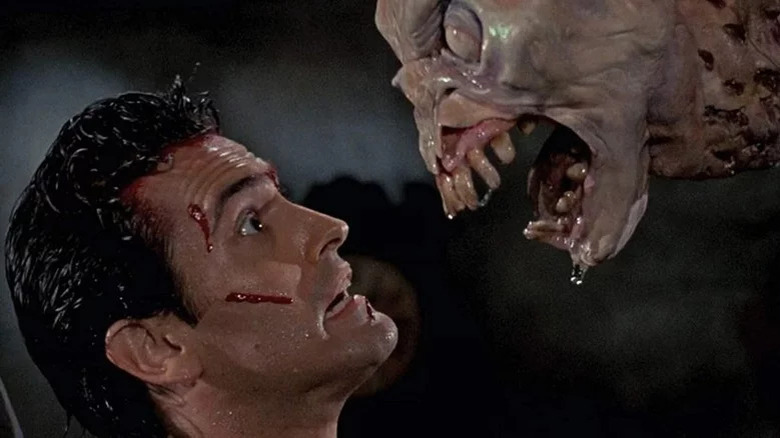
Sam Raimi's 1981 film "The Evil Dead" is a low-budget, independent project that had unprecedented success following Stephen King's vocal appreciation. Raimi was keen on making a sequel, but things didn't go as planned. His original idea was to have the main character, Ash Williams (Bruce Campbell), travel to the Middle Ages through a portal. Raimi struggled to get the ball rolling until his buddy King convinced producer Dino de Laurentiis to get on board.
De Laurentiis wasn't into Raimi's time-travel idea (though this would become the plot for the third installment), so Raimi was advised to stay closer to the original. Raimi didn't actually own the rights to the first movie, however, so he couldn't re-use any footage to tie the two together. His solution? To essentially remake the first film with a (mostly) different cast. Campbell returned for the role of Ash, but the actress who initially played his girlfriend Linda, Betsy Baker, wasn't available at the time.
The beginning of "Evil Dead II" sees Ash returning to the cabin where the horrifying events of the first entry happened with a new girlfriend in tow. He seems to have no memory of the previous events, and he and Linda (Denise Bixler) once again accidentally resurrect a demon and Linda gets turned into a Deadite. This confusion begs the question of if this is a sequel or a remake, a debate that has raged on for decades. Bruce Campbell's answer? It's actually a requel.
The Descent Part 2
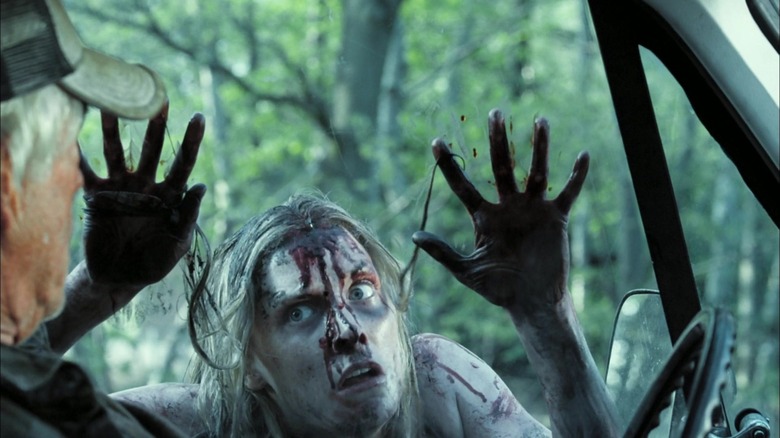
"The Descent" is one of the great (and under-appreciated) horror films of the 2000s, so it's a shame the sequel pales in comparison. The original is totally harrowing, and the ending doesn't offer much hope -- though it all depends on which cut you watch. According to Vulture, the original version had Sarah (Shauna Macdonald) stab her faithless friend Juno (Natalie Mendoza) before finally escaping to her car. But then, in a devastating blow, it's revealed Sarah never left the cave at all, and is still down there, hallucinating her dead daughter. Lionsgate thought this ending was a little too bleak, however, and the ending was changed to indicate that Sarah did in fact get out.
And then came the sequel, which is generally disavowed by fans of the first film. "The Descent Part 2" takes place shortly after the events of "The Descent" and sees Sarah finally escaping the cave -- which she either already did in the U.S. version, or very clearly did not do in the U.K. version. When she reaches civilization, it's revealed that she's lost all memory of what has happened, even though she hallucinated Juno in the car at the end of the first movie. And, about Juno, the woman she stabbed and left for dead? She's still alive, actually, and Sarah is somehow convinced to go back down into the caves. It makes little sense continuity-wise, and it also pointedly overlooks the psychological damage Sarah experienced in the original.
Scary Movie 2
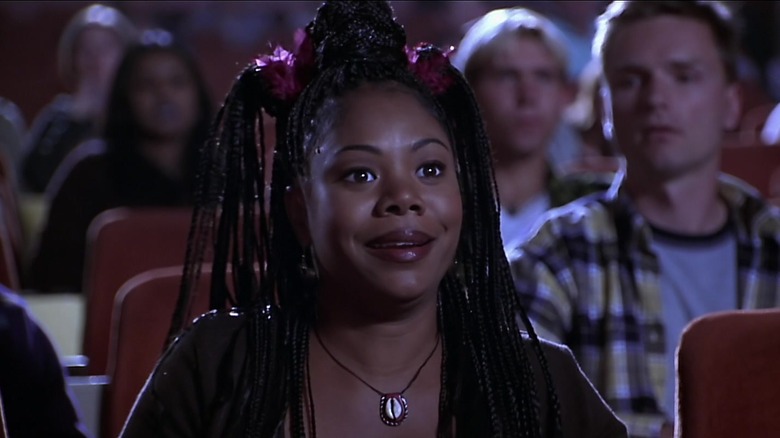
The "Scary Movie" series is one of the few examples where canonical inconsistencies are actually a welcome part of the story. The franchise is essentially one big horror movie parody, poking fun at films like "Scream" and "The Ring." One of the most beloved "Scary Movie" characters is Brenda Meeks, played by national treasure Regina King. Brenda is hilariously annoying, and this trait winds up getting her killed -- more than once, actually.
Brenda meets her first demise in the original film while attending a screening of "Shakespeare In Love." The other patrons at the movie theater don't take kindly to Brenda's constant yapping, and they silence her once and for all by stabbing her repeatedly. She dies by dramatically collapsing in front of the screen just like Jada Pinkett Smith's character in "Scream 2" (which was itself a parody of horror movie tropes wherein Black characters always die first).
Thankfully for us, "Scary Movie 2" completely ignores the events of its predecessor, and Brenda is once again alive and well. She makes it through relatively unscathed, but then dies once more in "Scary Movie 3" when she's killed by Tabitha (Marny Eng), who looks a lot like Sadako from "The Ring." Even though her casket is accidentally blown up at her funeral, Brenda returns for "Scary Movie 4," where she survives -- except for in a deleted scene where she's slain a final time.
Highlander II: The Quickening
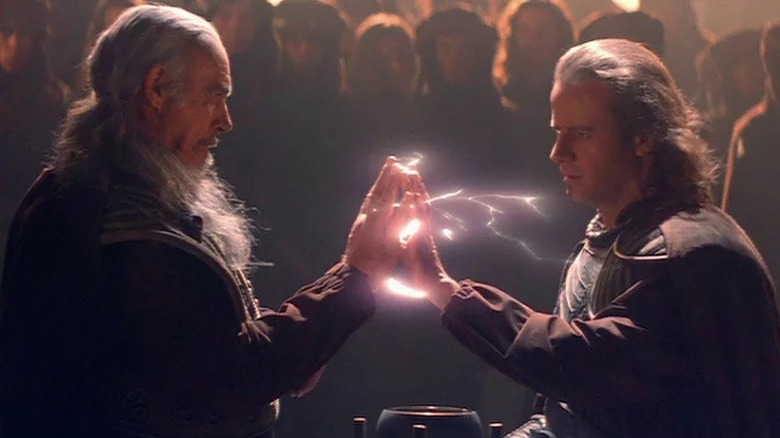
The plot of the first "Highlander" is already preposterous enough. Christopher Lambert plays Connor MacLeod, a 16th-century man born in the Scottish Highlands. He's revived after being killed in battle and learns he's part of a group of immortals who are invincible unless they are beheaded. Connor is told of a secret war that the immortals have fought for centuries. Those that survive will gather to battle for a mysterious reward known as the Prize. The Gathering finally occurs in New York City in 1985, and Connor defeats his enemies and finally discovers what the Prize is -- the gift of mortality.
The end of the first film is pretty conclusive -- there are no more immortals left in the world and Connor finally gets to settle down and have a family -- but that didn't stop producers from making a sequel. "Highlander II: The Quickening" completely upends the events of the first installment, and as such is one of the most hated sequels of all time. Here's what goes down: We quickly learn that the immortals were never actually immortals, but instead aliens. Sean Connery's character, Ramirez (who is Egyptian, but has a Spanish name and a Scottish accent, by the way), can resurrect himself, which means he's immortal again. Also, the Prize is no longer the gift of immortality, but rather a choice between dying very slowly or very quickly. And, perhaps most importantly, none of the characters -- including the titular Highlander himself – are actually Scottish, which really just defeats the entire premise.
Species II
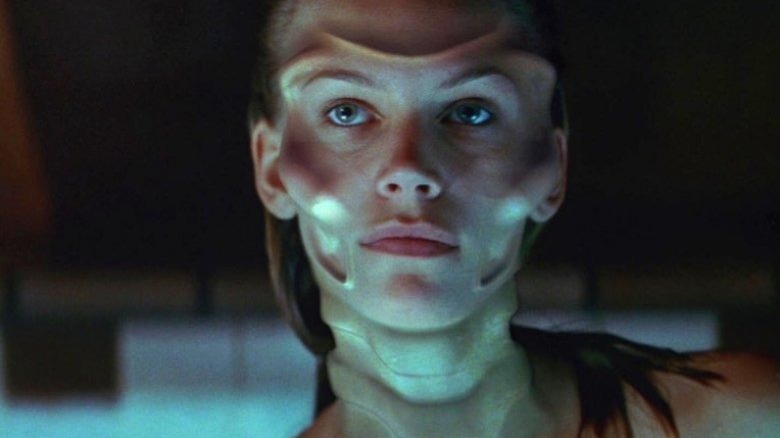
1995's "Species" is a mostly forgotten sci-fi horror film that treads familiar territory. The movie follows a group of scientists who have created an alien-slash-human hybrid, only to belatedly realize the danger it poses to society. The hybrid in question, Sil (Dana Hee), looks like a normal human and is intent on mating with men in order to produce offspring and take over the planet. Much of the film centers on how dangerous human sexuality can be, until its curveball ending. Though Sil has been defeated, in the final scene we see a rat chewing on her dead body and then mutating and devouring others of its kind.
This is an interesting direction, especially because it diverts our attention away from sex as the primary threat. Unfortunately, the sequel, released in 1998, doesn't take the bait. "Species II" reiterates the focus of the first installment, except this time it's a male alien who's trying to impregnate human women. But whatever happened to those rats? And what about the implications that alien DNA could genetically mutate other animals and potentially disrupt Earth's entire food chain? Sex sells, as the saying goes, so these compelling questions sadly remain unanswered.
Brahms: The Boy II
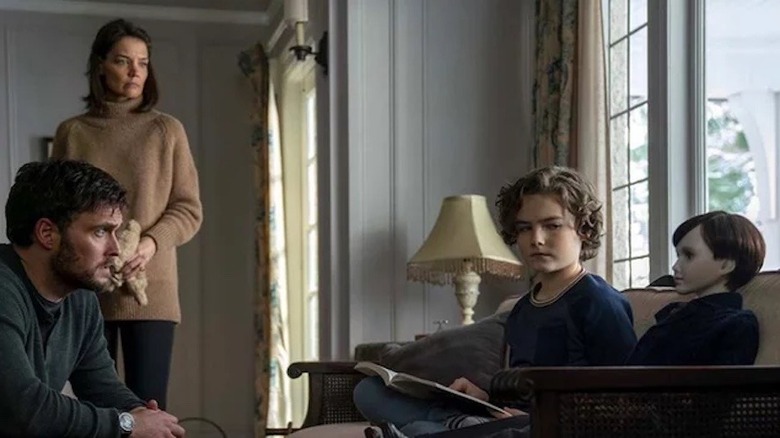
"The Boy" is a 2016 film that comes from a long line of possessed doll movies. Lauren Cohan plays Greta, a young woman hired as a nanny for a doll named Brahms. Her employers write out strict rules for her to follow, which she initially ignores until strange things begin happening around the house. She eventually comes to believe the doll is actually possessed, perhaps the most likely explanation for the events she experiences. The twist ending upends this notion, however, as we learn that Brahms' namesake is actually an adult man who was presumed to have died as a child, but has been living in the house all along, meaning the doll isn't actually possessed.
"The Boy" may be a possessed doll fake-out, but its sequel, "Brahms: The Boy II," reneges on the conclusion of its predecessor. At the end of "The Boy," Brahms the doll is smashed into pieces, only for someone to begin putting him back together in the final frame. In the second film, a young boy named Jude (Christopher Convery) moves into the house and becomes attached to the doll. The human Brahms is most certainly dead, but now the doll is truly possessed and Jude has to follow the same rules that Greta did. This sequence of events makes little sense, and it's no wonder the sequel was even more poorly received than the first movie.
I Still Know What You Did Last Summer
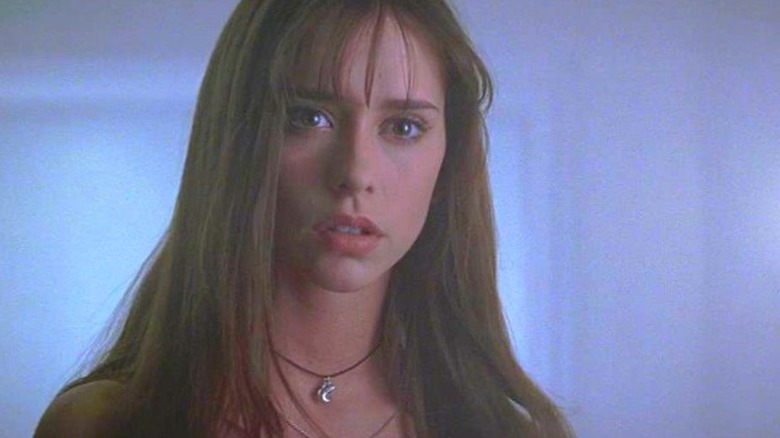
1997's "I Know What You Did Last Summer" is a classic example of silly slasher fun. It follows four high school friends -- Helen (Sarah Michelle Gellar), Ray (Freddie Prinze Jr.), Julie (Jennifer Love Hewitt), and Barry (Ryan Phillippe) -- who hit a man with their car and then try to cover up the evidence. They think they've gotten away with it until a mysterious man with a hook begins picking them off one by one. He doesn't get all of them, however, as the first film concludes with Juile and Ray still alive -- well, hopefully. At the end of the movie, Julie is attending college a year later and is accosted by someone who breaks through the shower door.
This is not necessarily an indication that Julie dies, but it's clear her attacker has returned. In the sequel -- which is probably better than you remember and also features both Jack Black and Brandy -- Julie's harrowing encounter with the mystery man is ignored completely. We find her once again at college, where she appears to be re-adjusting fairly well to normal life and makes no mention of ever being attacked in the shower. She even plans a trip with her best friend to the Bahamas, which doesn't end up working too well for her. But what "I Still Know What You Did Last Summer" lacks in continuity, it makes up for in Love Hewitt's absolute banger of a pop song that plays during the credits.
Superman Returns
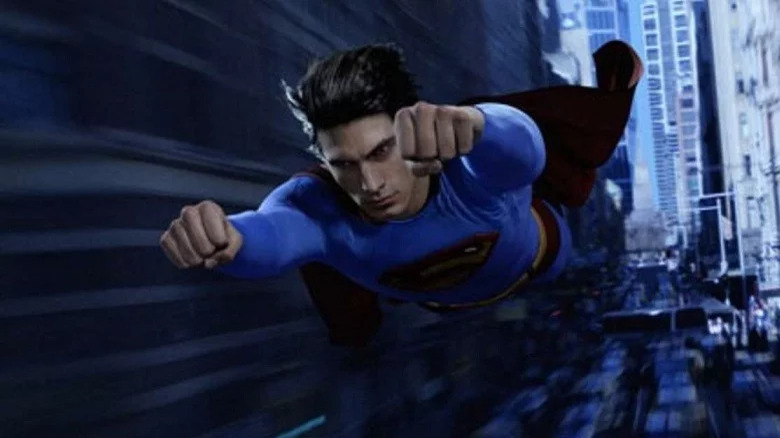
The Christopher Reeve "Superman" series, which first began in 1978, is one of the earliest examples of a superhero movie franchise, at least as far as DC and Marvel properties go. The original installment was critically and commercially successful, as was the second film, though slightly less so. Things took a turn for the worse with the third and fourth entries, "Superman III" and "Superman IV: The Quest for Peace," respectively. In fact, they were so poorly received that efforts have since been taken to erase them from the timeline altogether.
The 2006 film "Superman Returns" aimed to be a sequel to "Superman II," but ignore the third and fourth installments entirely. At the end of "Superman II," our titular hero flies into space. In "III" and "IV," Superman is safely back on Earth, though "Superman Returns" acts as if that never happened. It stars Brandon Routh as Superman and takes place five years after the events of "Superman II" as Clark Kent returns to Earth and finds that much has changed since he's been gone.
"Superman Returns" also effectively rejects the existence of Supergirl, as the 1984 work of the same name is technically part of the canon between "Superman III" and "Superman IV." Luckily, Helen Slater, the original Supergirl, got a chance to rejoin the universe by playing Supergirl's mom in The CW series.
Halloween H20 And Halloween (2018)
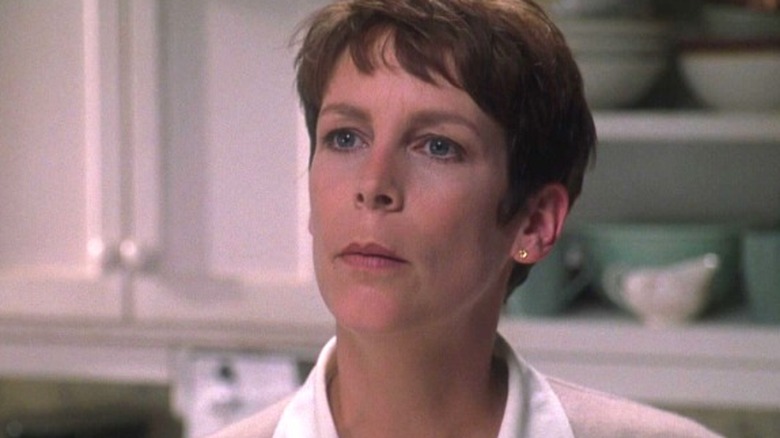
Horror movie franchises tend to have famously confusing timelines, and "Halloween" is one of the most confusing of them all. John Carpenter's 1978 original is one of the most beloved slasher films of all time, but things start to get a little wonky after that. "Halloween II" is a direct follow-up and has Laurie Strode (Jamie Lee Curtis) face down Michael Meyers once more, while "Halloween III: Season of the Witch" is an unrelated sequel and a meta-commentary on the series itself. The following entries, "Halloween 4: The Return of Michael Myers" (1988), "Halloween 5: The Revenge of Michael Myers" (1989), and "Halloween 6: The Curse of Michael Myers" (1995), were not especially well-received and also killed off Laurie Strode.
Flash-forward to "Halloween H20: 20 Years Later," which resurrects Laurie (she apparently faked her death), but otherwise ignores movies three through six, most notably omitting the existence of Laurie's daughter, Jamie. The film was relatively successful at the box office, leading to another sequel, "Halloween: Resurrection," in 2002. The series was then rebooted once again in 2007 when Rob Zombie threw his hat into the ring with two movies.
To make things even more complicated, 2018's "Halloween" -- and its sequels "Halloween Kills" and "Halloween Ends" -- omit the events of every previous movie apart from the original. This means that Laurie and Michael are not siblings in this timeline, a revelation that was discovered in "Halloween II." "Halloween Kills" brings the series to a pretty conclusive end, but who knows how long it will be until we get another reboot.
The Exorcist III

"The Exorcist" is an incredibly influential and terrifying film -- it was banned for over a decade in the U.K. -- and its sequel is an abject failure in comparison. "Exorcist II: The Heretic" delivers none of the frights of its predecessor, and instead comes off more like a slapstick comedy. When it came time for another installment, the events of "Exorcist II" were ignored entirely. In fact, the third "Exorcist" film wasn't meant to be a direct sequel. Author William Peter Blatty titled his follow-up novel "Legion" and intended for the movie adaptation to be released under that title. The studio wasn't satisfied with the name, however, and had it retitled "The Exorcist III" to emphasize the connection to the original.
This renewed branding meant several changes were made to the film itself, including a totally new ending, and of course, an exorcism scene. Though the third (or second?) entry in the franchise wasn't especially well-received at the time, it has since gained something of a cult following, with many fans attentive to the fact that Blatty's original vision was completely transformed by the studio. The director's cut has since been made available on Blu-ray, so viewers can now compare Blatty's version to what the studio came up with. The final theatrical cut is a pretty entertaining thriller on its own, though it's ultimately brought down by comparisons to the original.
Jaws: The Revenge
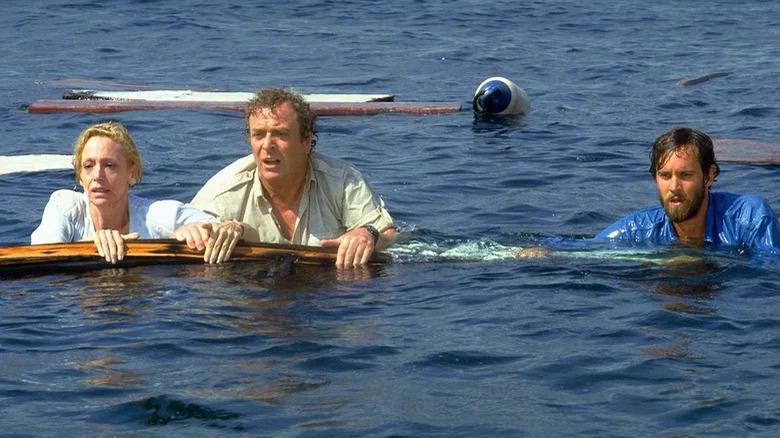
Steven Spielberg's "Jaws" is often considered a horror masterpiece and is credited as one of the first summer blockbusters. Unfortunately, the three sequels are frequently hailed as some of the worst follow-ups ever made. The second installment, "Jaws 2," is just fine, while the third, "Jaws 3-D," released during a period where third entries in a series were released in 3-D as a gimmick, was much, much worse. The movie stars Dennis Quaid as Mike Brody, the son of Chief Brody (Roy Scheider), an engineer who works at Seaworld. Mike is dating marine biologist Kathryn (Bess Armstrong) and has a younger brother, Sean (John Putch).
"Jaws 3-D" was received poorly by critics, and the next one in the series ignores it entirely. "Jaws: The Revenge," also focuses on the Brody brothers, but they are essentially different characters. Mike is now a marine scientist played by Lance Guest, and he has a wife, Carla (Karen Young), and a daughter. Sean (now played by Mitchell Anderson) is a police deputy who is killed by a great white at the start of the film. Mike convinces his mother, Ellen (Lorraine Gary), to come back to the Bahamas with him and his family after Sean's funeral, and thus the bloody events continue.
The decision to forget "Jaws 3-D" didn't turn out too well, however, as "Jaws: The Revenge" was universally panned. The fourth film in the series effectively nuked the franchise, which really shouldn't have gone on past the original masterpiece.
I Am Legend
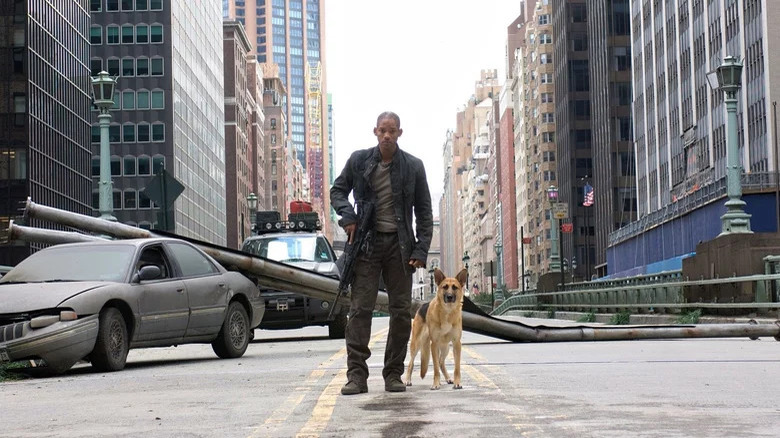
The Will Smith-starring "I Am Legend" is a classic post-apocalyptic film, but its ending has long been debated. The movie is based on Richard Matheson's book of the same name, which has a far bleaker finale than Hollywood could handle at the time. In the novel, the Darkseers (aka the infected vampires) look just like humans, and Dr. Neville (Smith) has a relationship with one of them. This Darkseer turns out to be a spy who was sent to investigate him because of how many Darkseers he has killed and experimented on over the years. Dr. Neville realizes that, according to them, he is the monster meant to be feared.
The original ending that was filmed is closer to the novel, with Neville realizing that he has become a monster, but managing to escape with Anna (Alice Braga) and Ethan (Charlie Tahan). This didn't test well with audiences, so it was reworked to show Neville sacrificing himself to protect the cure and thus eliding this revelation about his own monstrous behavior.
It's now been announced that there will be a sequel to "I Am Legend," and this follow-up will ignore the original ending and instead go with the alternate version. Taking place decades later, the Darkseers have maintained their own society, and mother nature has continued taking over the planet. Writer Akiva Goldsman likened the world of the film to "The Last of Us," wherein humans are longer in control of Earth.
Read this next: 14 Sequels That Truly Didn't Need To Happen
The post Sequels that ignored the previous movie's ending appeared first on /Film.
Okay, We're Ready For The Seven Of Nine And Captain Shaw Spin-Off After Star Trek: Picard Season 3
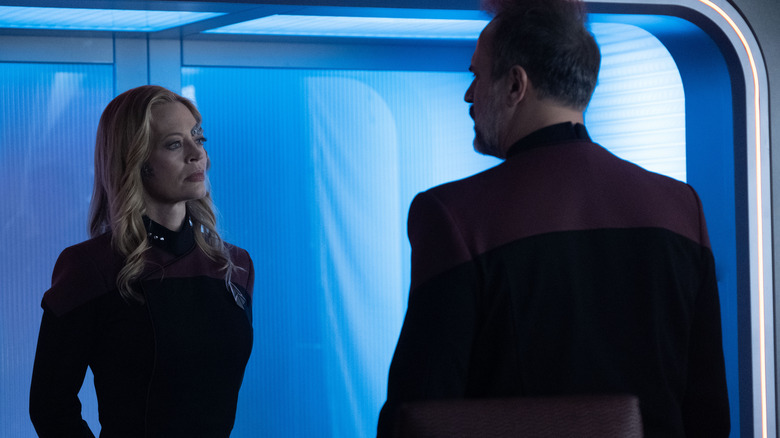
Back in 2020, prior to the debut of "Star Trek: Picard," lead actor Patrick Stewart explained to several reporters that he would only return to the show if he wasn't required to wear a Starfleet uniform. He didn't want to simply go back to the same schtick seen on "Star Trek: The Next Generation" some 30 years earlier, preferring to revisit Picard as a retired civilian. While this is a reasonable demand, a "Star Trek" series that wasn't about Starfleet, or that didn't take place on a starship that was actively trekking, proved difficult for the writers. The first two seasons of "Picard" centered on outsized, byzantine mysteries that involved interdimensional robots (in season 1) and causality loops (in season 2). There was no formal chain of command and no central technological haven for the characters to reconnoiter.
These missing elements were restored for the third season of "Picard," and it seems they were key to making the series "feel" like "Star Trek" again. This season so far is a marked improvement over the first two, feeling like one of the more action-forward "Star Trek" feature films than a strange, loose adventure story. It helps that much of the action takes place on board the U.S.S. Titan-A, a retrofitted starship that was once commanded by Capt. Riker (Jonathan Frakes). The Titan-A is now commanded by the curt, self-professed a-hole Capt. Liam Shaw (Todd Stashwick), the kind of character one loves to hate. His first officer is Cmdr. Seven of Nine (Jeri Ryan), having re-entered Starfleet after a long career as a bounty hunter.
This season of "Picard" may be focused on, well, Picard, but once his adventure is done and the season has ended, could Trekkies humbly request a spinoff series about Shaw and Seven on the Titan?
Star Trek: Titan
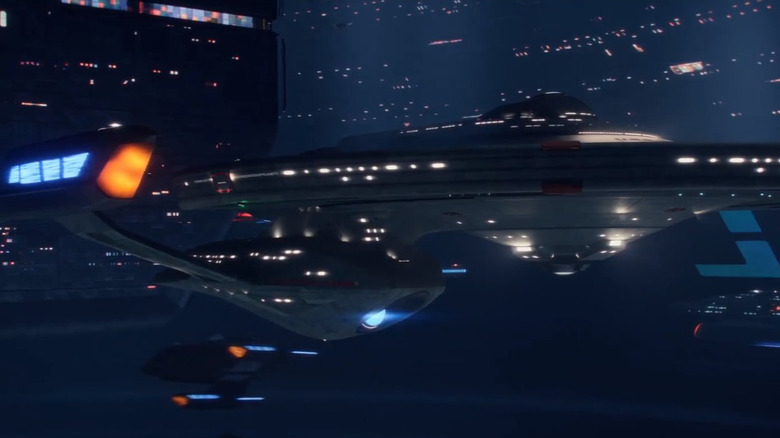
The makers of "Star Trek: Picard" have included a surprising amount of background detail on the U.S.S. Titan to assure hard-gazing Trekkies that, yes, this is indeed a proper starship with a full crew and its own technological foibles. Mike Okuda, one of the main designers of "Star Trek: The Next Generation" returned to design the computer panels, making Trek computers look like they had indeed advanced in the last several decades. Also, one can see a full crew on board, including the Vulcan Lt. T'Veen (Stephanie Czajkowski), the Bajoran Lt. Matthew Arliss Mura (Joseph Lee), the Haliian Ens. Kova Rin Esmar (Jin Maley), and the snippy Trill chief medical officer Dr. Ohk (Tiffany Shepis). Already, a unique ensemble is being formed under our noses.
Importantly, a command dynamic is already being explored between Shaw and Seven. Shaw, formerly an engineer, is a commander who plays by the rules and is always very careful to do things by the book. He is aggressively closed to making exceptions for his crew, and has no interest in creating a warm work environment for those in his command. Previous "Star Trek" captains could sometimes be firm or assertive, expecting their crew to behave professionally, but they always fostered a team that would work well together and knew when it was appropriate to be social or candid. Shaw clearly has no such compunctions, making him a bad boss ... but not a terrible starship captain.
Meanwhile Seven, coming from the U.S.S. Voyager, once worked under a captain (Janeway, played by Kate Mulgrew) who considered her crew her family. She prefers a chain of command that allows for warmth, for intuition, for coloring outside the lines.
Coloring Inside The Lines
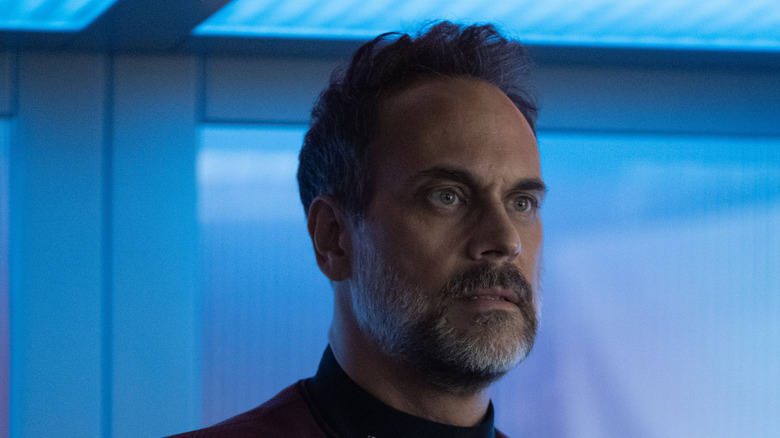
A Titan TV series would allow Trekkies to see the working relationship between Shaw and Seven play itself out on a weekly basis, with each keeping the other in check. Shaw has a tendency to be flip, and Seven could reign him in. Seven has a tendency to break rules, and Shaw could reign her in. They may not like each other, but over the course of "Picard," they learn to respect each other, and that's exciting drama. The two characters' working dynamic could carry a whole series.
"Star Trek" has long been expressly about the chain of command, about formalism, and about military propriety. A character like Shaw, while indeed kind of an a-hole, fits perfectly into "Star Trek." Comparisons to the brusque Capt. Jellico (Ronny Cox) from the two-part "Next Generation" episode, "Chain of Command" (December 14, 1992), are not inappropriate. His crew doesn't like him, but he gets the job done. Equally, however, "Star Trek" has also been about unpacking the messier contradictions in human nature. Are we driven by structure, or is there an emotional element that drives us? The original "Star Trek" was largely about a passionate human (Dr. McCoy), a logical Vulcan (Spock), and the leader that balances them (Capt. Kirk).
A similar fundamental balance seems to be playing itself out with the "Picard" characters. And the balance is so appealing, Trekkies are already imagining what it might look like when serialized.
Although one might need a title other than "Star Trek: Titan." It seems that was already a series of tie-in novels. Maybe one can call it "Titan A.E." for "After Enterprise." That one's available, right?
Read this next: The Main Star Trek Captains Ranked Worst To Best
The post Okay, We're Ready for the Seven of Nine and Captain Shaw Spin-Off After Star Trek: Picard Season 3 appeared first on /Film.
In Star Trek: Picard Season 3, The Jean-Luc And Jack Crusher Dynamic Is So Much Better Than It Has Any Right To Be
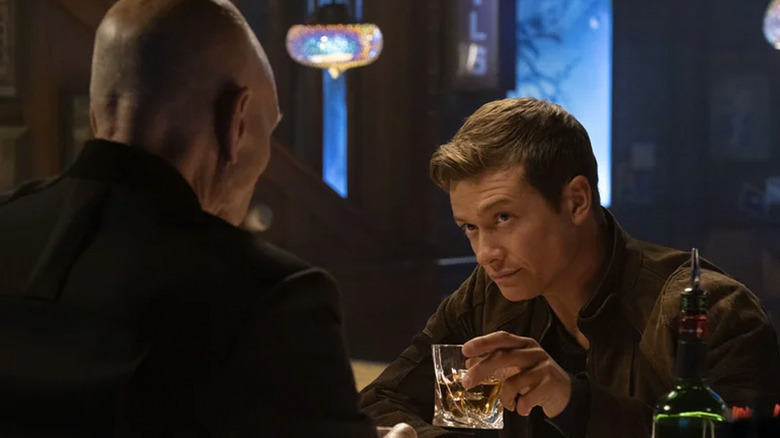
This article contains spoilers for the latest episode of "Star Trek: Picard."
The "long lost son" arc isn't a particularly graceful addition to any media. At best, it reads like a soapy, blindsiding revelation. At worst, it's a choice that undermines a perfectly good story. Ironically though, it's something that fans of "Star Trek: Picard" have been anticipating for some time — and with the introduction of Jack Crusher (Ed Speelers) in the series' third season, "Picard" has finally made good on years of speculation.
With Jack, "Picard" had an opportunity to develop its titular admiral (Patrick Stewart) in areas that few "Star Trek" projects had explored before. Jack's presence in Picard's life stirs up all manner of unfinished business: it addresses decades of self-denial for Picard — decades spent in service to Starfleet — and has the guts to asks whether it was all worth it. Surprisingly enough, it all works to the advantage of the story. There's enough interpersonal drama to go around in the third season of Picard, but it's never too much to distract from the developing plot. Jack is also much more than a physical manifestation of lost potential for Picard. He's still his own person, his own very unique character, and it's just one of the reasons why his dynamic with Picard works so brilliantly.
The Elephant In The Room
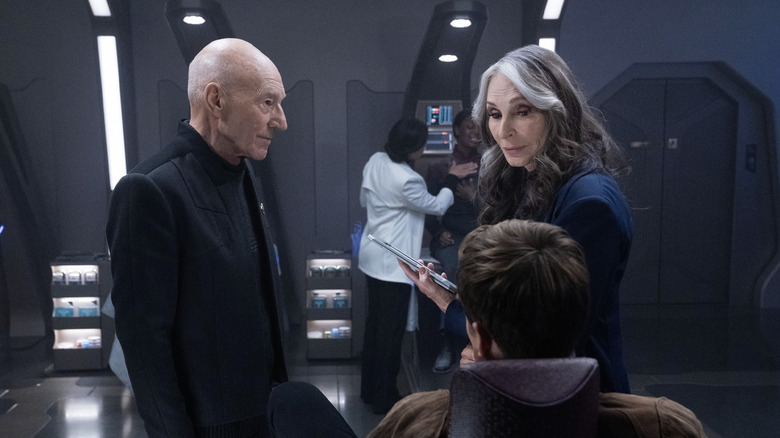
After Jack's harrowing near-death experience in "Seventeen Seconds" — and with the USS Titan facing certain destruction in "No Win Scenario" — Picard finally has a moment to get to know his estranged son. Things kick off just as awkwardly as one would expect, but Jack manages to break the ice by asking about the fate of his hairline. The seeds of a relationship are planted in that first exchange, and though it's undeniably a bit awkward, it's also carried by a shocking amount of chemistry.
Seeds of that chemistry were first planted in "Seventeen Seconds," especially when Picard confronted Jack about his extensive criminal record. Unlike Picard's confrontation with Beverly, in which they candidly unloaded years of bitter truths, Picard's first real conversation with Jack is defined by the things they're afraid to say. At this point in time, Picard doesn't know for sure that Jack is his child, but he seems at least marginally aware of the possibility. His own confusion and fear — along with Jack's frustration — adds layers of varied, charged emotion to this scene.
The tension between Picard and son felt palpable in that exchange, but it's easy to feel electrified at the sight of two people bickering. Stewart and Speelers manage to carry that same charge into their quieter, more cordial moments as well, now that both know what they are to one another, and it's a brilliant exercise in tension all around. Watching Picard grapple with the fact that he has a son will always be compelling, but watching him grapple with the idea that this son chose not to make himself known — all while Jack dances around this issue — is another thing entirely.
The Face In The Crowd
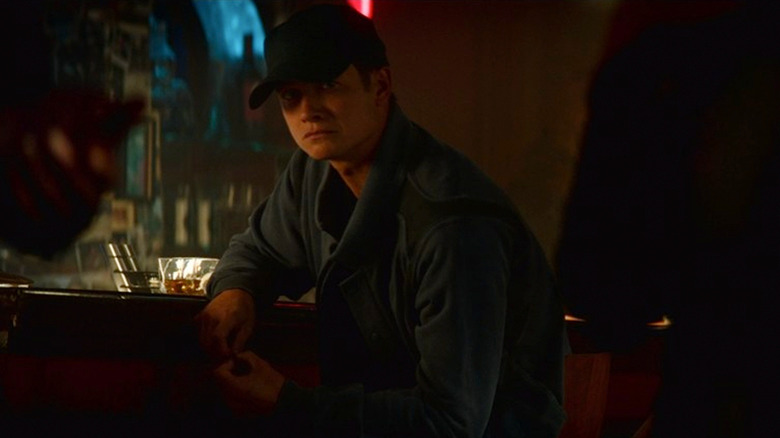
Even with the seeds of a relationship beginning to form here, Jack and Jean-Luc's dynamic is still very much about the angst. "Picard" season 3 does a great job in addressing the life Picard could have had, the one he habitually sacrificed in order to serve Starfleet. It's been interesting to see that juxtaposed with William Riker (Jonathan Frakes), who managed to start a family while helming a Starfleet vessel. For one reason or another though, Picard never wanted the same; the family he found with the Enterprise crew has always been more than enough. He even says as much to Jack — and a group of Starfleet cadets — at a bar in San Francisco, years before the events of "No Win Scenario."
Of course, Picard had no idea that his stirring address was actually alienating a real member of his family. He doesn't even remember it happened until much later. But once he does, he understands exactly why Jack chose not to get to know him, and it's that irony that only elevates their dynamic further.
"Picard" has never been shy about bringing its hero face to face with his own foibles. But this third season has been addressing the bulk of it with a level of sophistication and heart that wasn't really seen in seasons prior. It's wild that they've managed to achieve so much with a trope that's been so hit-or-miss in other media. — but when it works, it really does work.
Read this next: 11 Reasons Why The Next Generation Is The Best Star Trek Show
The post In Star Trek: Picard Season 3, the Jean-Luc and Jack Crusher Dynamic is So Much Better Than It Has Any Right to Be appeared first on /Film.
Move over Elden Ring, Clash: Artifacts Of Chaos is the new hardest game in town

Clash: Artifacts Of Chaos is nails, mate. And that's coming from someone who recently reviewed Team Ninja's Wo Long: Fallen Dynasty, a game that's mighty good at grinding people into paste. I'm not trying brag; I'm being vulnerable with you. I have a case of the Ben Affleck blues, where most sessions of Clash's third-person action-adventuring have me veering from elation to being slumped against a wall with Affleck's signature grimace on my face.
Aside from being really difficult, I'm a bit undecided on how I feel about Clash in the portions I've played so far. It looks fantastic and puts some brilliant spins on combat, but levelling is a bore and exploration has a confusing edge. It's at once both a grand time and an annoying one. The surreal lands of Zenozoik, it turns out, aren't all sunshine and turkey men. There are a lot of turkey men, though.
Canada's Tax Revenue Agency Tries To ToS Itself Out of Hacking Liability
Read more of this story at Slashdot.
YouTuber Sentenced To Over 5 Years and Ordered To Forfeit $30 Million in Large-Scale Cable Piracy Case
Read more of this story at Slashdot.
TSA Requires Aviation Sector to Enhance Cybersecurity Resilience
TSA instructs airport and aircraft operators to improve their cybersecurity resilience and prevent infrastructure disruption and degradation.
The post TSA Requires Aviation Sector to Enhance Cybersecurity Resilience appeared first on SecurityWeek.
How to Make Your Retro Games Look Like They Used to With RetroArch’s Shaders
People often recommend you play your favorite games using RetroArch's multi-emulator front end. However, you might still find they look slightly "off" compared to how you remember them from when you first played them decades ago. Thankfully, RetroArch supports various shaders, with which you can emulate the look of the ancient CRT on which you first met Mario, Sonic, and their friends.
‘Sys01 Stealer’ Malware Targeting Government Employees
The Sys01 Stealer has been observed targeting the Facebook accounts of critical government infrastructure employees.
The post ‘Sys01 Stealer’ Malware Targeting Government Employees appeared first on SecurityWeek.
The US Air Force Is Moving Fast on AI-Piloted Fighter Jets
Op Ed
Get Blockstorm for Free
Mistakes by Threat Actors Lead to Disruption, Not Just Better Blocking
Threat actors really only stop when their infrastructure is disrupted and their flow of funds disappears.
The post Mistakes by Threat Actors Lead to Disruption, Not Just Better Blocking appeared first on SecurityWeek.
What Is Secret Sprawl in Cybersecurity and Why Is It Dangerous?
Do you store sensitive data in multiple locations? Many people do, either intentionally or unintentionally, but it's not as harmless as you think. You are exposing your system to cyberattacks via secret sprawl.
How to Make Truly Great Irish Soda Bread

Irish soda bread is a reliable “anytime-food,” but it’s especially apt for celebrating St. Patrick’s Day. This hearty loaf can be a real boon to a packed schedule, since it has few ingredients, the dough comes together in minutes, and it’s ready to eat in less than an hour. Sadly, I’ve come across a host of flat,…
Jenkins Security Alert: New Security Flaws Could Allow Code Execution Attacks
The Big Lebowski Sums Up Everything You Need To Know About The Coen Brothers
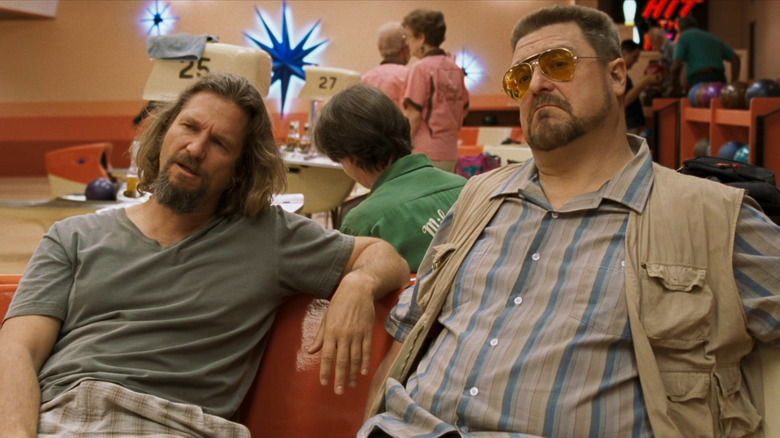
When "The Big Lebowski" hit cinemas 25 years ago, most people had no idea what to make of it. Sure, it made immediate fans of some, but the movie was met with a heavy dose of bewilderment. In the critical community, this confusion came from the fact that Joel and Ethan Coen were coming off of their Oscar-winning film "Fargo," released just two years earlier. Though they had made plenty of celebrated films prior, "Fargo" was this unimpeachable, darkly funny thriller that could satiate your average audience member and already established Coen fan alike. They crystallized something in that film that made it seem like the brothers would just be building off of its foundation afterward.
But that's not what happened. The Coens took a sharp left turn and made an offbeat stoner comedy that riffed on the classic tropes of film noir. They had become "serious" filmmakers with hardware to show for it, and I think some people felt betrayed after latching themselves to the directing duo when they immediately pivoted and made something seemingly so unserious.
All this time later, we now can see the greater scope of Joel and Ethan Coen's careers, and them deciding to make this movie no longer feels unusual in their filmography. In fact, it encapsulates so much of the directors' interests, methods, and collaborators that few of their films feel more like a Coen brothers movie than "The Big Lebowski." It was all hiding in plain sight for the folks back in 1998. Just nobody was ready to see it yet.
A Deep Love Of Genre
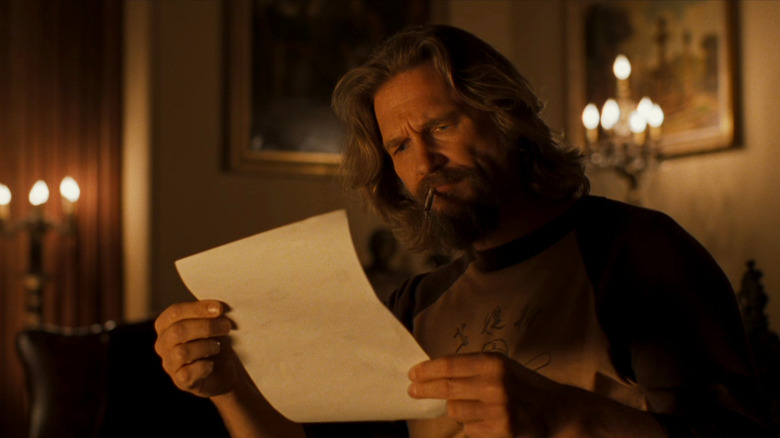
The Coen brothers are deeply indebted to the classic storytelling traditions of 20th-century American cinema and literature. They especially love the hard-boiled crime works of the century's early decades. Starting with their neo-noir debut "Blood Simple," the twisty plotting and hard-bitten characters of the genre were firmly established and only continued on from there. Nearly every film they make involves some sort of criminal plan that either needs to be solved or shows how it goes sideways for the person committing the crime. Dashiell Hammett, the writer behind "Red Harvest" and "The Thin Man," and Raymond Chandler, writer of "The Big Sleep," are a particular influence on the brothers, and their fingerprints are all over "The Big Lebowski."
Chandler's most famous character is the private detective Philip Marlowe, most famously portrayed by Humphrey Bogart in the film adaptation of "The Big Sleep" by Howard Hawks. For "The Big Lebowski," instead of having a character like Marlowe at its center, they flip the genre on its head by having the ultimate slacker, The Dude, play the part of the private detective. Sure, there are plenty of well-written, expertly executed gags, but so much of the comedic circumstances from which those gags can work simply come from the fact that the Coens completely understand the genre they are maneuvering through. It's not enough that The Dude does funny things. You actually need to care about the mystery he is embroiled in. Otherwise, there's nothing to hang your hat on.
"The Big Lebowski" is also pulling from things like Preston Sturgess comedies and Busby Berkeley musicals as well, adding to the film's unusual texture and steeping it even further into those storytelling traditions.
A Fascination With Religion
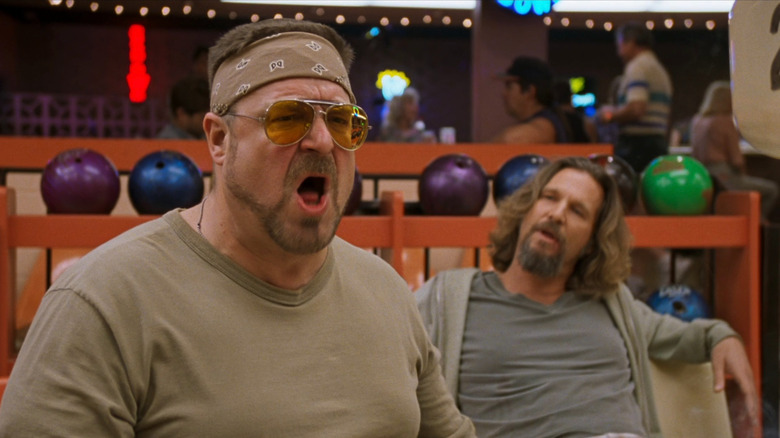
A misconception about the films of the Coen brothers is that they don't care about their characters or actively want to punish them. This is a miscalculation of how they see the world. Importantly, Joel and Ethan Coen are Jewish, and each of them have very strong connections with the stories and themes of the Old Testament, which they frequently explore in their work. If you go back and actually read those stories, they are cautionary tales of the consequences of the foibles of man. The Coens often make films about a character who makes a poor, self-interested decision, and the rest of the film chronicles the fallout of that decision.
Their interest in religion isn't just in storytelling terms, though. It is also discussed explicitly with characters. Be it the semi-autobiographical 1960s Jewish community in "A Serious Man" or the council of religious leaders in "Hail, Caesar!," the Coens often feature characters who belong to a faith group and examine the funny, sometimes contradictory ways their faith interacts with their personality. In "The Big Lebowski," we see this in John Goodman's Walter Sobchak.
Walter converted to Judaism when he got married. Even though he is now divorced, he still practices Judaism and militantly shomer Shabbos, which is someone who only uses the day of the Sabbath as a day of rest, prayer, and ritual. When he isn't observing the Sabbath, Walter is a firebrand, quick to yell and scream and berate at a moment's notice, but his anger is typically directed at those who break rules, something a practicing Jew shouldn't do. In his mind, everything he does is righteous and explainable, even threatening someone with a gun. The Coens are fascinated by the lives of religious people, even more so when they don't act like it.
The Coen Brothers' Stock Company
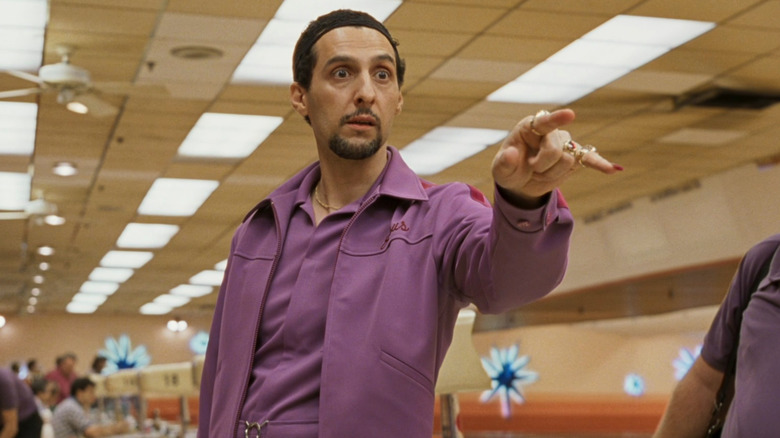
Over the course of their career, the Coen brothers have racked up a ton of people both in front of and behind the camera that they bring from project to project. Even though "The Big Lebowski" was seen as a departure for the brothers, nearly everyone involved is still part of their usual company. On screen, you have John Goodman, Steve Buscemi, John Turturro, Peter Stormare, and, in a very small role, Jon Polito, all returning from previous projects. The only major Coen collaborator from that era you are missing is Frances McDormand. Our lead is Jeff Bridges, working with the Coens for the very first time, but he would go on to reunite with them in 2010's "True Grit." They love to collect idiosyncratic character actors and mix and match them in all of their projects because these films require such a specific fidelity to language and the ability to nail a tricky tone. Once they find these actors, they don't let them go. You can always tell when another filmmaker is really trying to do what the Coens do because they will often cast one of their stock players in a movie (I'm looking at you, Michael Bay).
Behind the scenes, you have all of the usual suspects as well, including cinematographer Roger Deakins, composer Carter Burwell, editor Tricia Cooke (who is also married to Ethan Coen), costume designer Mary Zophres, storyboard artist J. Todd Anderson, and more. Production designer Rick Heinrichs didn't go on to work with the Coens after this movie, but he did work on "Fargo" previously. They have amassed a group of talented craftspeople who know exactly how they like to work and how to get their vision onto celluloid. Though the actors are the flashier stock company, that company is just as strong behind the camera.
Utterly Bizarre One-Scene Characters
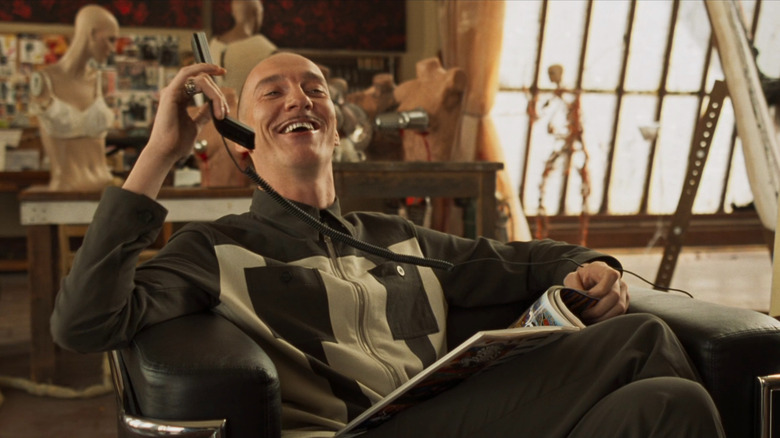
No one in a Coen brothers movie is ever just a functionary. When a character steps on screen, you can imagine an entire life for them, and none of those lives are ever boring. My favorite example of this is the Bear Man in "True Grit." Whenever someone like him shows up in one of their movies, all you want is an entire film delving into the life of that person. In the case of "The Big Lebowski," that actually did happen a number of years later when John Turturro wrote and directed a spin-off based on his character called "The Jesus Rolls." But I'm talking about the really small, ultimately inconsequential characters.
A perfect example of this is David Thewlis as Knox Harrington. In terms of story, there is literally no reason for this character to exist. All he does is sit in the art studio of Maude Lebowski (Julianne Moore), reading a magazine and laughing like a hyena. Even The Dude is just standing there completely bewildered by who this guy is and why he's there. Once the scene ends, he never shows back up and is never mentioned. The Coens are brilliant at creating these characters that are only meant to flesh out the world they've created and provide a connection to these people's lives off-screen.
"The Big Lebowski" is littered with these characters. You have the incredibly aggressive Malibu police chief, porn magnate Jackie Treehorn (Ben Gazzara), who draws cartoon men with giant erections for no reason, The Dude's meek, interpretive dancing landlord, and the iron lung-bound former television writer and his silent, stubborn son. Even the cop who recovers The Dude's stolen car makes an odd impression.
The Coens Always Switch Things Up
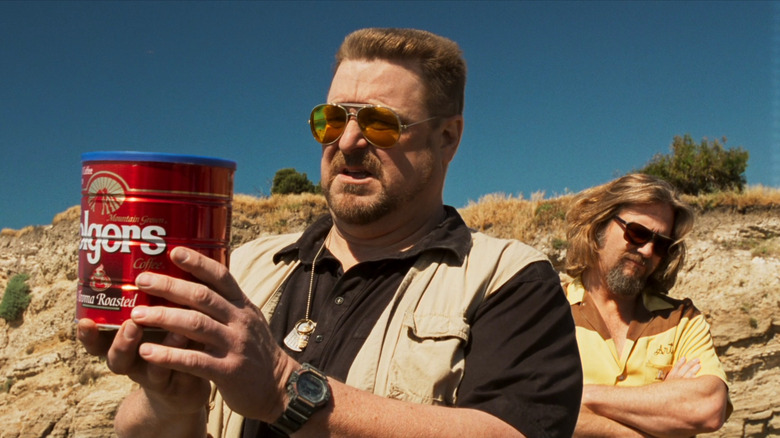
In thinking about auteurs, people are quick to put filmmakers in a box. Just look at the number of people who think Martin Scorsese only has made gangster movies over the course of his career. Of course, this couldn't be further from the truth, but in examining a filmmaker, it makes things easy on the examiner if every film a person makes resembles the last one. It makes charting progression or regression simpler. Joel and Ethan Coen will always zig when you want them to zag.
After making their down-and-dirty neo-noir "Blood Simple," what did they do? They made the cartoonish comedy "Raising Arizona." After that, the period mob drama "Miller's Crossing." Whenever they make a movie, you can guarantee that the follow-up is going to be nothing like the previous film. People should have seen this coming with "The Big Lebowski." Just because "Fargo" put them on a new strata of recognition didn't mean Joel and Ethan Coen were going to change how they operate. Why would they? Creativity is never born out of staleness. You constantly have to be trying new things if you want to fulfill yourself as an artist. It's funny how a decade later, the same exact thing happened when they made the goofy political comedy "Burn After Reading" after the Best Picture-winning dark Western noir "No Country for Old Men."
Because "The Big Lebowski" is something you wouldn't expect from the Coen brothers, that is why it is exactly what you should expect from the Coen brothers, and once you are able to reconcile your whiplash, you will quickly see how everything that makes them the singular, brilliant filmmakers they are is plainly present in "The Big Lebowski." 25 years later, it's certainly obvious.
Read this next: The Coen Brothers Movies Ranked Worst To Best
The post The Big Lebowski Sums Up Everything You Need To Know About The Coen Brothers appeared first on /Film.
Amazon Engineer Loses Bid For Class Action Over Work-From-Home Expenses
Read more of this story at Slashdot.
Google Tells Employees That Fewer of Them Will Get Promotions To Senior Roles
Read more of this story at Slashdot.
Grogu's First Word Was Actually 'Patu' – But What Does It Mean?
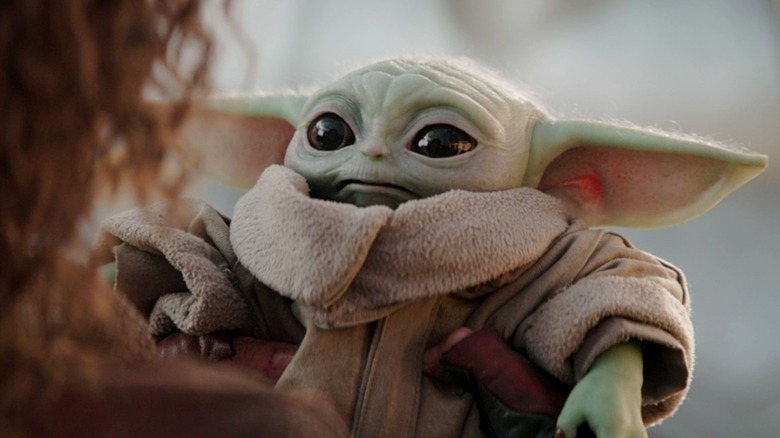
Warning: This article contains major spoilers for the second episode of "The Mandalorian" season 3.
Our little Grogu is growing up! In the latest episode of "The Mandalorian" season 3, he arrives at Peli Motto's (Amy Sedaris) repair shop and says the word "Patu." She thinks it's his first word, and while it very well may be the first one we've heard, it isn't the first time we've heard it. In fact, the cutest little thing this side of a baby Ewok has been saying "Patu" since season 2 started. It's not written out in the closed captioning, so you -- like me -- might have originally thought it was just one of the adorable little noises he makes. Still, after rewatching the places where he says it in the second season (via a YouTube video from Janani R) and where he says it for the first time to Peli in "The Book of Boba Fett" (via another video from Simpy69), it's clearly a distinct word.
What does "Patu" mean in Grogu's language? We don't even know the name of his species, so it's speculation, of course. Still, we can look at the times he's said it and draw a few conclusions.
All The Times Grogu Says 'Patu'
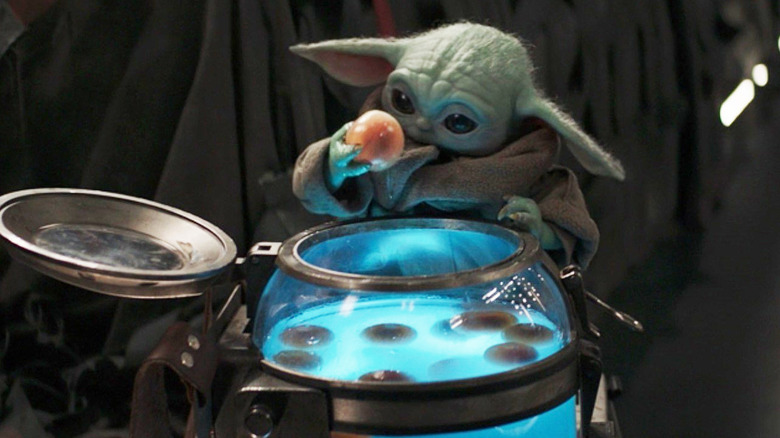
Here's a collection of instances where our little friend utters his single word:
- He says it in season 2 when Mando catches him eating Frog Lady's eggs.
- He says it while poking his moving soup with a spoon.
- After he steals a blue macaron cookie sleeve at school. He says it when he sees the kid he stole them from looking at him.
- When Mando and Grogu are walking away from the bounty hunter Lang (Michael Biehn) as they set off to find Ahsoka.
- In "The Book of Boba Fett" when he sees Peli Motto from the X-wing fighter.
- In "The Mandalorian" season 3, episode 2 when Mando shows him the map of the planet Mandalore and its moons.
- Later in the same episode, he says it in response to Mando telling him, "We're on our own from here."
Before I dive into an examination of what "Patu" could mean, I do want to at least mention the possibility that this could be sort of like the word "Groot" that the Marvel character of the same name uses for everything. It could also be just a nonsense word that he responds with ... sort of an acknowledgment of something with a noise that sounds like speech. Some cats, for instance, will answer any question asked of them with a series of meows. It sounds like they're "talking," but obviously it's just a cat sound.
The possibilities I came up with are, "I'm hungry" (or "Hungry, I am," if we're going with his species' odd syntax), "Papa," "sorry," and a sort of combo of "hello" and "goodbye," the way the Hawaiian word "aloha" can mean both.
What Does It Mean, Buddy?
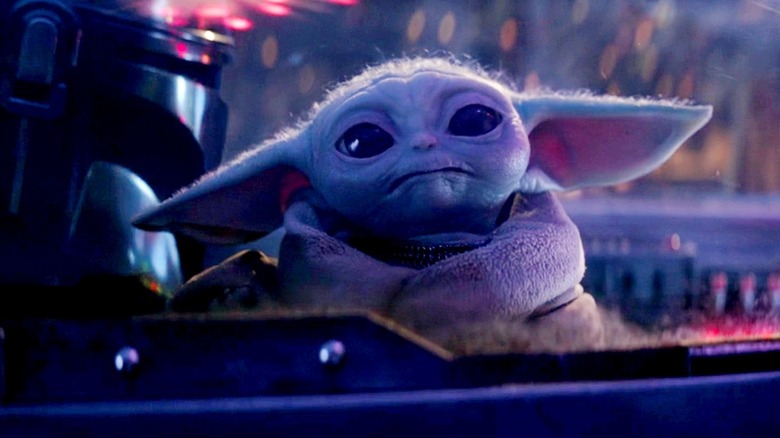
Let's start with "I'm hungry." That one does seem to fit because, hey, a snack attack can happen at any time, especially when you're tiny. It could be his explanation for eating Frog Lady eggs since Papa Mando clearly doesn't want him to have those. It certainly works when he's about to eat something living in that soup bowl. Like, "Sorry, soup monster. I'm hungry, and you're in a bowl, so I don't have a choice here." It would be the right explanation for when he steals cookies from his classmate.
It doesn't really fit when they're walking away from Lang, but hey, negotiations could make the little guy hungry, so it's not entirely out. They are pretty far away by the time he says it. He could be hungry when his ship gets to Peli's place. However, unless Grogu is another form of Galactus, he's not asking to eat a few planets when Mando shows him Mandalore and its moons. It could still work if it's a non-sequitur, but he does seem to be paying close attention.
"Sorry" might work in a few places. He could be sorry he ate the Frog Lady eggs, sorry he's going to eat a soup monster (though he wasn't sorry when he ate the frogs in season 1), and sorry for stealing the cookies. However, it doesn't make sense when they're walking away from Lang, showing up at Peli's place, or learning about navigation. I think that one is out.
What's That, Grogu? Is Mando In The Well?
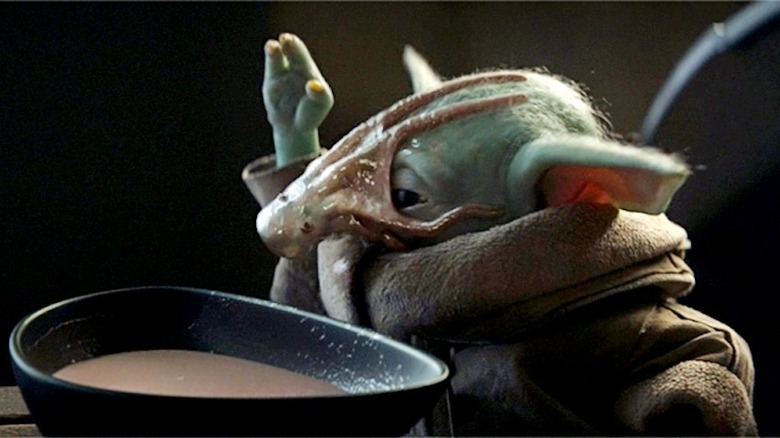
The next up on the list of possibilities is "Papa." It works when Papa is the one scolding him for eating eggs. He could be calling for Papa to explain why his freaking soup is moving. The cookies might be a stretch, but it could be, "Papa, he wants his cookies back, but I want to eat them," or "Papa says I can eat whatever I want." It could even be, "Papa, come get me because, oops, I stole these cookies with my Force powers." That one is a little light on meaning, but moving on.
When they leave Lang, he could be turning to Papa to ask something else, or wondering why Papa just said he was there for luck. He could certainly be asking for Papa's location when he gets to Peli in "The Book of Boba Fett." He could be saying it because he's getting navigation lessons, and Mando just started saying "we" in reference to the two of them as Mandalorians.
Excuse me. I have something in my eye.
Hi, Papa Mando!
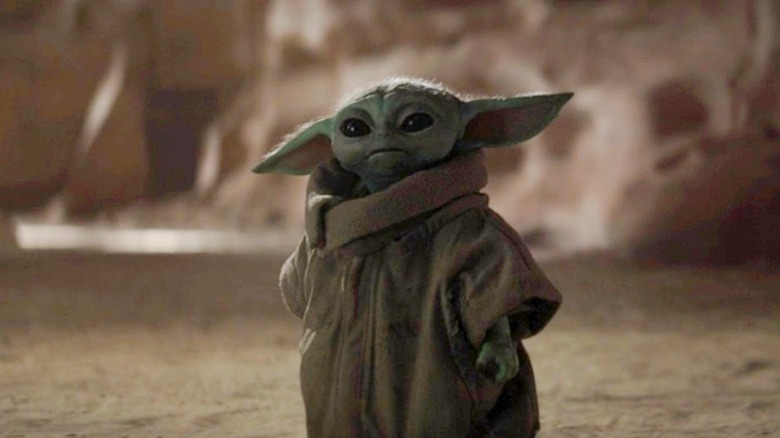
Last on that list is a combo of hi and goodbye. With the eggs, it could have been, "Hi, Papa! Eggs are yummy!" Creepy as it is, he could be greeting or bidding farewell to the soup monster before he eats it. (I mean, he does eat eggs with frog embryos in them and live frogs as well.) He could be saying hi to the kid he took the cookies from because he doesn't realize it's wrong. Saying goodbye to Lang is a given, and hello to Peli. It's only the last one that I'm not sure about. When he's learning about Mandalore and the moons -- including Concordia, where Mando tells Grogu he grew up -- he could be saying hi to Papa's homeworld.
That one might be a stretch, but having spent a bunch of time around my niece and nephew when they were little, it could work. They would say hello to a flower if I pointed one out, a door we were about to go into, or a book I picked out to read to them.
When He Learns To Call Mando 'Papa,' I'll Be Dead Of Cute
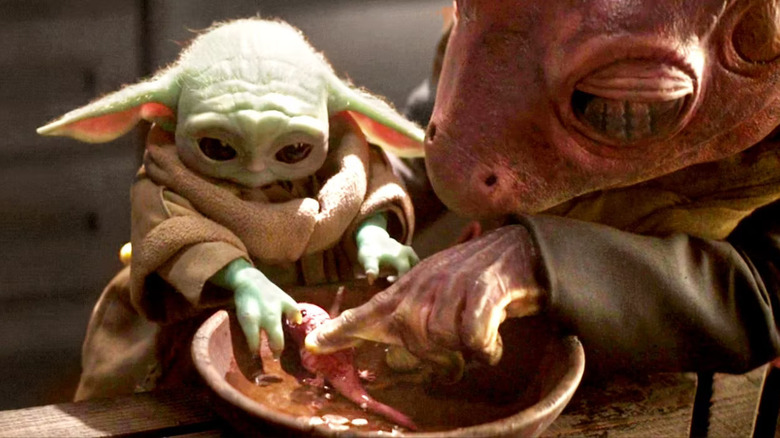
You know, all of this said, he could have learned a single word in his language before he was given away to the Jedi Temple, where other languages were spoken. His language likely wasn't -- we don't even know the name of his species (though we do know some things about Grogu's secret origin). We've only seen Yoda and Yaddle before this, neither of them speaking anything but whatever language the film is being shown in. He could also be doing a common thing with babies where they learn a single word and use it for everything. You know, how once they learn to say "Mama," Dad is Mama, siblings are Mama, the dog is Mama, and lunch is Mama.
Whatever it is, it's a good way to break in before the little guy actually learns the word "Papa" (or the equivalent in Mando'a, which is Buir, meaning both mother and father). Hearing him call Din that is going to turn me into a puddle of goo, so maybe it's best to just stick to "Patu" for now.
"The Mandalorian" season 3 is currently streaming on Disney+ with new episodes each Wednesday.
Read this next: Andor Character Guide: Meet The Cast Of The Rogue One Prequel Series
The post Grogu's First Word Was Actually 'Patu' – But What Does It Mean? appeared first on /Film.
Why Din Djarin Is So Crap At Wielding The Darksaber
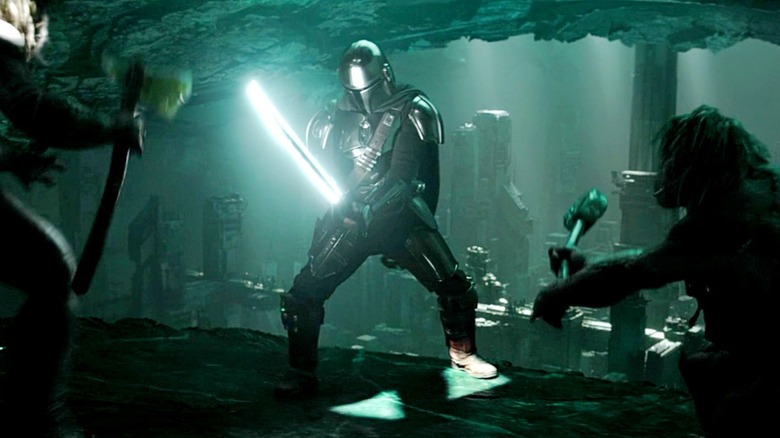
Warning: This article contains major spoilers for the second episode of "The Mandalorian" season 3.
Lightsabers have been a staple of the "Star Wars" franchise since Luke Skywalker saw one for the first time in the Tatooine cave of Obi-Wan Kenobi in "A New Hope." Over the decades, we've learned about the different styles of lightsabers, the Kyber crystals needed to create them, what the different colors might mean, and how to wield them. The Darksaber is a bit different than the rest, however. It was created by Tarre Vizsla a thousand years before "The Mandalorian" takes place. Tarre was the first to be both a Mandalorian and a Jedi, despite the fact that those two groups have a less-than-friendly history. The Jedi held it in their Temple until the Mandalorians freed it. Now their lore says the wielder of the Darksaber has the right to rule Mandalore, but only if they win it through combat.
Sabine Wren (Tiya Sircar) held it for a bit in "Star Wars Rebels," then gifted it to Bo-Katan Kryze (Katee Sackhoff). Of course, having it gifted means there is no claim to Mandalore, despite the fact that Bo-Katan's sister once ruled. In "The Mandalorian," Din (Pedro Pascal) wins the saber from Moff Gideon (Giancarlo Esposito) and attempts to give it to Bo-Katan. Again, not helpful. Now Din is having a whole lot of issues using it. He ... well, he sucks at it.
The big issue with this "elegant weapon for a more civilized age" is that it's not just a blade of light. Like many other weapons of legend, fiction, and folklore, you must be worthy to wield it. It's not quite the same as something like Thor's Mjölnir in the Marvel Cinematic Universe. Your worthiness is tied to your self-worth, not your inherent goodness.
'Your Body Is Strong But Your Mind Is Distracted'
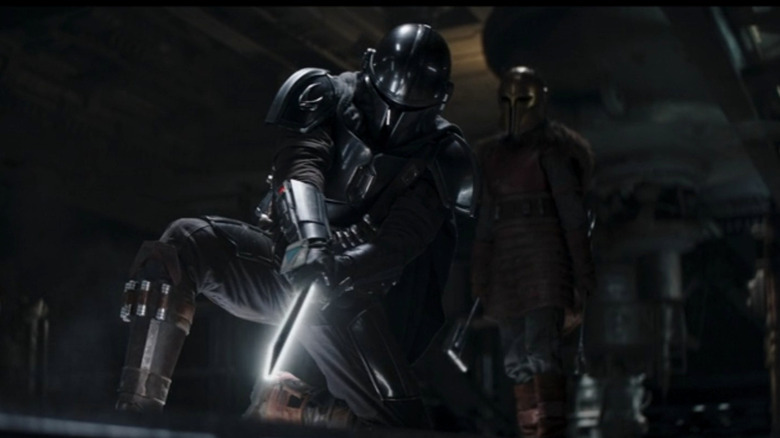
With "The Mandalorian" season 3 underway, we're getting another chance to see Mando attempt to use the Darksaber, which he hasn't been doing well so far. In "The Book of Boba Fett," Din returned to see The Armorer (Emily Swallow) with the Darksaber, which got heavier with every move as he sparred with her. It even scraped the ground as he tried to lift it. The Armorer tells him that he's fighting it. "You cannot control it with your strength," she says. "Persistence without insight will lead to the same outcome. Your body is strong, but your mind is distracted." He must conquer himself before he can conquer the blade.
Worthiness is often baked into the lore of legendary weapons. Think about the famous sword Excalibur which could only be pulled from the stone by the rightful King. Or there's Odysseus's bow in "The Odyssey," which no suitors for his wife Penelope could use until he returned. Or even the staff of Hermes Trismegistus in the video game "Assassin's Creed: Odyssey," which will only allow you access to Atlantis if you don't seek to use it for power.
Din is definitely struggling with his self-worth, both through the last two and a half seasons and into this one. He was a foundling who was not born into the Mandalorian sect he was adopted into and has tried to live by the Creed. However, against their laws, he's shown his face to others and, by virtue of that, is "a Mandalorian no more." That is until he's bathed in the Living Waters under the Mines of Mandalore.
Finding Self-Worth
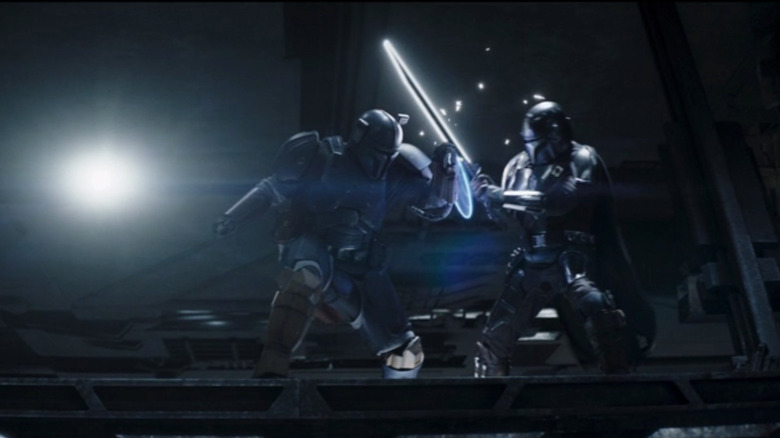
We, as viewers, know that Din is worthy of that blade. He lives by a code, cares for his tiny little son Grogu, and is a good man. Unfortunately for Din, being a good man isn't what lets you wield the saber. Moff Gideon was able to use it, and he's not exactly getting medals from space Princesses for his virtuousness. However, he believes he has the right to it. Paz Vizsla (Tait Fletcher, voiced by Jon Favreau) would likely be able to use it ... if he'd been able to win it from Din.
So, what is Din's issue? Sabine eventually believed she could use it, so finally, she could. Din doesn't feel he has the right to it because of his belief in what the Armorer says, that he is no longer a true Mandalorian now that he's shown his face. Whether or not that will change is a secret for future episodes to reveal. What's important is that he doesn't believe it. Plus, he doesn't want to rule (meaning he'd probably be good at it).
So why could Bo-Katan use it in season 3, episode 2? She believes she has the inherent right to rule. She is certain about herself, whether she's happy with her present situation or not. Din is crap with that Darksaber because he believes he doesn't deserve it. That simple fact is the draw of the entire series. We see that he's worthy. He cannot. We watch him struggle and root for him because we know that if he did rule Mandalore, he would be great at it. (Oh my god, think of little prince Grogu in a tiny, fancy coat!) Now he just has to learn this for himself.
"The Mandalorian" season 3 is streaming on Disney+.
Read this next: Star Wars Characters That Are More Important Than You Knew
The post Why Din Djarin Is So Crap At Wielding The Darksaber appeared first on /Film.

